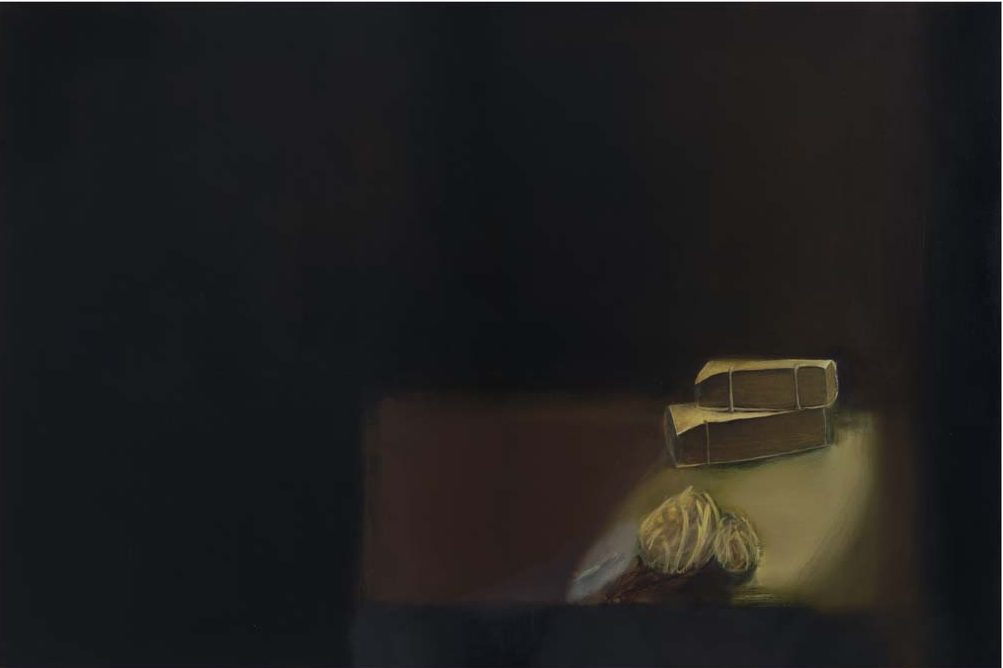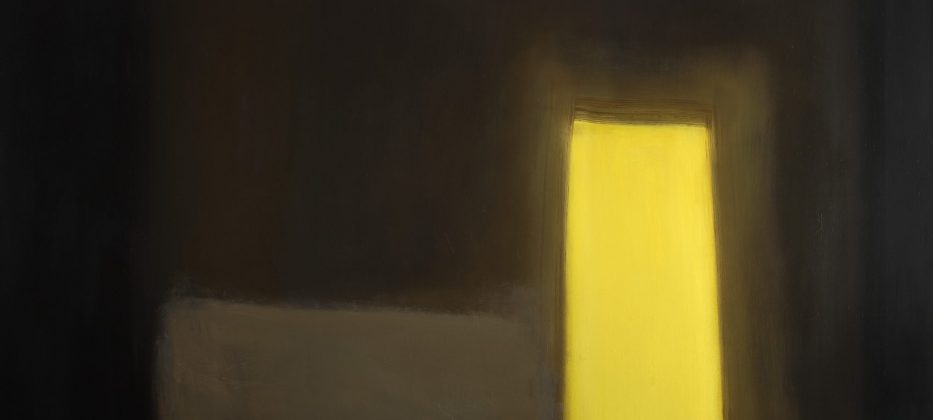VANITAS I, 2006 – 2009. Collection of four large paintings, oil on linen
The collections in Vanitas I and Vanitas II explore themes concerning evolution, deep time, silence, the unknowable, and linked to art history. They are informed both by palaeontological records explored with scientists in the Department of Earth Sciences at the University of Cambridge and by western art history. They play with time by combining the unfathomably vast geological record to Vanitas – a specific art historical, still life genre that emphasises the brevity of life from the human perspective.
Here in Vanitas I, four large paintings each focus on a carefully selected life form that represents a specific aspects of evolution. Perhaps we look at a spotlight on a theatre stage; the curtains pulled back. As in all Vanitas paintings, time and the ephemeral are central themes.
See Vanitas II.
Vanitas is a form of still life painting that developed in northern Europe in the late sixteenth century. Its’ central theme focuses on the transience and frailty of life. With this in mind commonly portrayed symbols included mirrors, clocks, feathers, flowers, rotten fruit and skulls. The burning candle seen in Vanitas II, is a recurrent theme, forming a thread throughout the collection to unite it all and impose a cyclical orientation.




